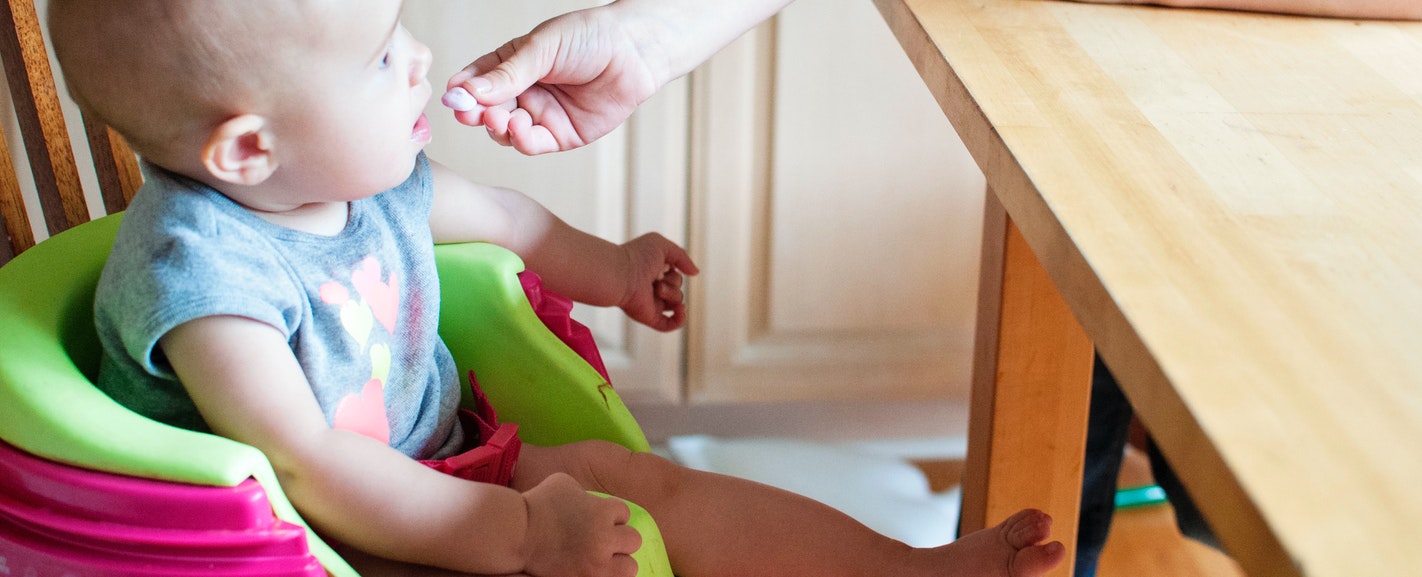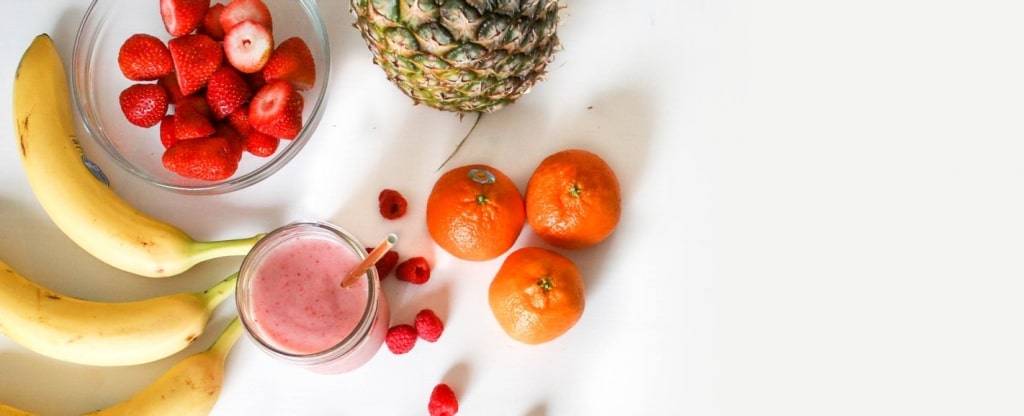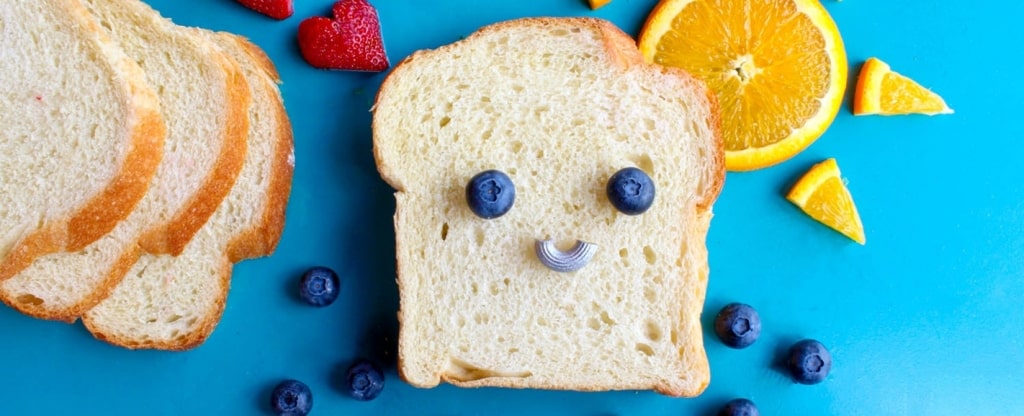All newborns and young infants get their nutrition and caloric intake from breast milk or formula. Around age 4-6 months, many babies will make the transition to solids. While breast milk or formula likely makes up the majority of your baby’s diet at 6 months of age, solid foods will start to play an integral role in your baby’s growth and development.
Not all calories are created equal, so the type of solid foods that you introduce to your child is important as well. While certain foods that you may introduce to your baby have specific nutritional benefits, it is also important to keep in mind the impact these foods can have on your baby’s newly erupting teeth. First off, the number of teeth your baby has will impact what foods they are able to chew. Additionally, certain foods that you may be offering to your baby may influence your baby’s risk of getting cavities. Below, we will help guide you through which foods may be better for your baby’s teeth than others.
In this guide, we’ll cover:
- Making Your Own Baby Food
- Baby Food Recommendations
- Baby Foods to Avoid
- How Can My Baby Eat with Just a Few Teeth
- Can Baby Food Cause Cavities
- Pouches and Snacks
- Baby-Led Weaning
Making Your Own Baby Food
When it comes to solids and baby foods, one of the simplest things you can give your baby is single-ingredient purées. While there are many packaged baby foods available in grocery stores across the country, you can easily make baby food at home. The process is easier than you may expect! You don’t need to be a stellar chef to create nutritious, fresh, and enjoyable baby food. As a general guideline, it is best to wait 2-4 days before introducing a new food to your baby in order to rule out any possible allergies. Therefore, since your baby is introduced to a new food one at a time, each “recipe” has just one ingredient! How simple is that?
In order to make baby food at home, you’ll need a few special pieces of equipment. This includes a food processor or blender, a hand masher, a vegetable peeler, and ice cube trays. Before preparing foods, be sure to thoroughly wash any fresh produce. If applicable, peel foods as necessary. This applies to foods that have a peel or more fibrous outer skin such as carrots, beets, squash, or apples.
If you don’t have access to fresh fruits and vegetables, it is okay to use frozen. You’ll just want to check to make sure there are no additional ingredients, such as added sugars or salt. It is best to avoid canned or processed foods, as these often have added sugars, excess salt, or other preservatives or additives.
Now that your food is prepped for cooking, you’ll want to cook all vegetables as well as any fruits that are normally firm (think apples). The goal is to soften the food. You can do this by boiling, steaming, or microwaving food with a small amount of water until the desired softness is achieved. If you prefer to make baby foods that have a thinner consistency, add a small amount of water, expressed breast milk, or infant formula to obtain the desired consistency. When your baby first starts with solids, a relatively thin, runny consistency is generally preferred. However, as your baby gets older, you can go from a thin purée to mashed, and then chunky consistency.
Once the food is cooked, blend, grind, or smash foods into a purée. Foods that have seeds (blackberries or raspberries) or tough fibrous skin (apples) may need to be strained through a fine sieve. Once ready, spoon or pour puréed food into ice cube trays, and freeze. Frozen purée cubes can be stored in an airtight freezer container and thawed when ready to consume.

Baby Food Recommendations
Fresh fruits and vegetables are great sources of vitamins and nutrition for your growing baby. Vegetables that serve well in homemade baby food include sweet potatoes and yams, peas, broccoli, and asparagus. After 6 months of age, you can also try carrots, green beans, squash, turnips, and spinach. It is generally recommended to avoid vegetables that may have a higher concentration of nitrates until your baby is over 6 months old.
Fruits that make excellent baby foods include apples, bananas, avocado, pears, blueberries, blackberries, and plums. Keep in mind that anything with seeds (berries) will need to be strained before serving.
While fruits and vegetables offer many nutrients, they are not always a great source of protein. Meat, such as chicken, beef, turkey, pork, or fish, offer great sources of protein. Additionally, legumes, such as lentils, split peas, black beans, kidney beans, pinto beans, or white beans are also a good source of protein for your baby.
Baby Foods to Avoid
Avoiding foods that have added sugars or salt is important. Processed foods tend to have more additives compared to fresh foods. If you are hoping to add flavor to your baby’s food, try adding spices and herbs rather than salt. For example, you can try adding flavors such as garlic, cinnamon, basil, cilantro, turmeric, or cumin to your baby’s food purées.
Puréed baby foods that have fruit offer more vitamins and nutrients that juice. The American Academy of Pediatrics recommends no fruit juice before age one. From a cavity perspective, juices have a much higher chance of causing cavities, especially on the front teeth, than chewable foods or purées.
It is also important to avoid giving babies any honey before age one due to the risk of botulism.
Choking is a big concern as your baby is introduced to solids and finger foods. Avoid foods that could pose a potential choking hazard. Examples include peanuts, raisins, whole grapes, hot dog pieces, hard or raw chunks of fruit, stringy uncut pieces of meat, firm cubes of cheese, etc. Sticky foods, such as a large dab of peanut butter can also pose a choking risk. If giving your baby peanut butter, be sure to spread it thinly across a cracker or toast.

How Can My Baby Eat with Just a Few Teeth?
Your baby’s first teeth to grow in are usually the bottom central incisors. The average age for this to happen is around 6 months. For some babies, those first teeth can come in as early as 3-4 months, or for others, as late as 9-12 months. Not to worry; your baby does not have to have teeth in order to eat solids. Because your baby has been accustomed to drinking breast milk or formula for the last 6 months or so, transitioning to swallowing purées isn’t too different. Because purées are thin and smooth, swallowing (not chewing), is the only action required!
It will take time for your baby to learn to acclimate to the new texture of baby food. The transition to eating solids allows for many adorable photographic moments, as most of the food seems to get pushed out of the mouth with the tongue than actually swallowed. However, as your baby becomes more familiar with swallowing, and grows in more baby teeth, his or her ability to eat will quickly change.
For most babies, around 12 months of age, the top and bottom incisors will grow in, giving them four teeth on the top, and four teeth on the bottom. As hand-eye-coordination improves, your baby will be able to pick up pieces of food and use his or her front teeth to bite small pieces. Around age two and a half, your baby will grow in eight molars, bringing his or her total tooth count to 20! Molars are used to chew and crush foods, so smaller pieces of food and softer foods make the transition to eating solids much easier.
Can Baby Food Cause Cavities?
The short answer is yes, baby food has the potential to cause cavities. However, this doesn’t mean that cavities will actually form. It is common knowledge that anything that has sugar can cause cavities. Processed foods that have added sugars will pose a higher risk for cavities compared to fresh foods. However, anything that our body processes as a carbohydrate can cause cavities. Therefore, while candy and sweets are not nearly as healthy as dried fruits, for example, both have a high carbohydrate content. Sticky foods, like dried fruits, can stay stuck to the surface of enamel longer than non-sticky foods. The residual foods that stay “stuck” to the teeth can increase cavity risk.
Other than avoiding processed foods and foods that are high in sugar, it is also important to have water or milk during and after a meal to wash away any residual food debris. Not only is water good for our bodies, but it is also good for our teeth! Water or milk in a sippy cup or bottle is an appropriate way to start to incorporate water into the diet. You can also offer small amounts of water in an open cup, as this promotes proper tongue positioning, which is important for future speech development. Avoid giving your child juice (especially in a bottle), as sugars and carbohydrates are highly concentrated and the juice will bathe all surfaces of enamel, significantly increasing cavity risk.
And last but not least, be sure to start brushing your baby’s teeth as soon as teeth start to erupt. Brushing will remove any residual food debris as well as cavity-causing plaque. Even better, use a smear (the size of a grain of rice) of fluoride toothpaste during brushing. Fluoride will help strengthen your baby’s enamel, therefore reducing cavity risk.

Pouches and Snacks
As your baby transitions to toddlerhood and his or her appetite increases, snacking becomes part of the normal day-to-day routine. Growing babies need to eat! With the introduction of pouches, snacking for infants and toddlers is now easier than ever. You can just throw a pouch (or two) in the car, diaper bag, stroller caddy, and you’re set. Most pouches offer a combination of fruits, vegetables, and grains. To get the most nutritional benefit out of pouches, aim for ingredients that offer less sugar and more fiber and protein. And again, encourage your baby to have a sip or two of water upon finishing a pouch to help wash away any residual carbohydrates.
Provide your baby with finger foods to help with hand-eye-coordination while simultaneously offering nutritional benefits. As your baby graduates from purées and mashed foods, you can start to offer soft, bite-sized chunks or pieces of food. Cheerios are a simple, relatively healthy on-the-go snack that is perfect for young toddlers. Puffs and other “baby crackers” tend to have added carbohydrates to make them taste sweeter and more appealing to young infants. Goldfish crackers are a popular snack item for toddlers. However, these yummy crackers have the ability to stay stuck in the grooves of molars. Dried fruits (dried mango, raisins, and craisins) pose a similar problem as crackers and stay stuck in molar grooves. Be mindful of how often your child snacks on crackers and dried fruits and simply add water or milk to the snack time routine.
Baby-Led Weaning
You may have heard of baby-led weaning (BLW), or may have even tried it for your growing infant. Baby-led weaning involves skipping spoon-fed purées and going straight into letting your baby feed themselves with finger foods. The thought behind baby-led weaning is that it encourages the development of age-appropriate oral motor control, while simultaneously promoting a positive, interactive experience for your infant.
Regardless of if you give your child purées or if you want to explore baby-led weaning, the types of food your baby will be eating are usually the same. The texture of the food is the biggest difference. Infants who participate in baby-led weaning should be given soft (or cooked) fruits and vegetables that they are easily able to chew and break down with their teeth and gums.
At Sprout Pediatric Dentistry & Orthodontics, our pediatric dentist, Dr. Dana Fox, will help parents as they navigate the ins and outs of their growing baby, and how diet can impact their baby’s oral health and development. Call or text 503-477-9911, or email to schedule your baby to have an infant dental exam with our stellar team.

Dr. Dana grew up in Portland and went to Temple University in Philadelphia, PA for dental school. She then moved to Anchorage, AK for her residency in Pediatric Dentistry. Dr. Dana takes a holistic approach to pediatric dentistry & is able to use her own parenting experience to sympathize and understand each family’s unique dynamic.


